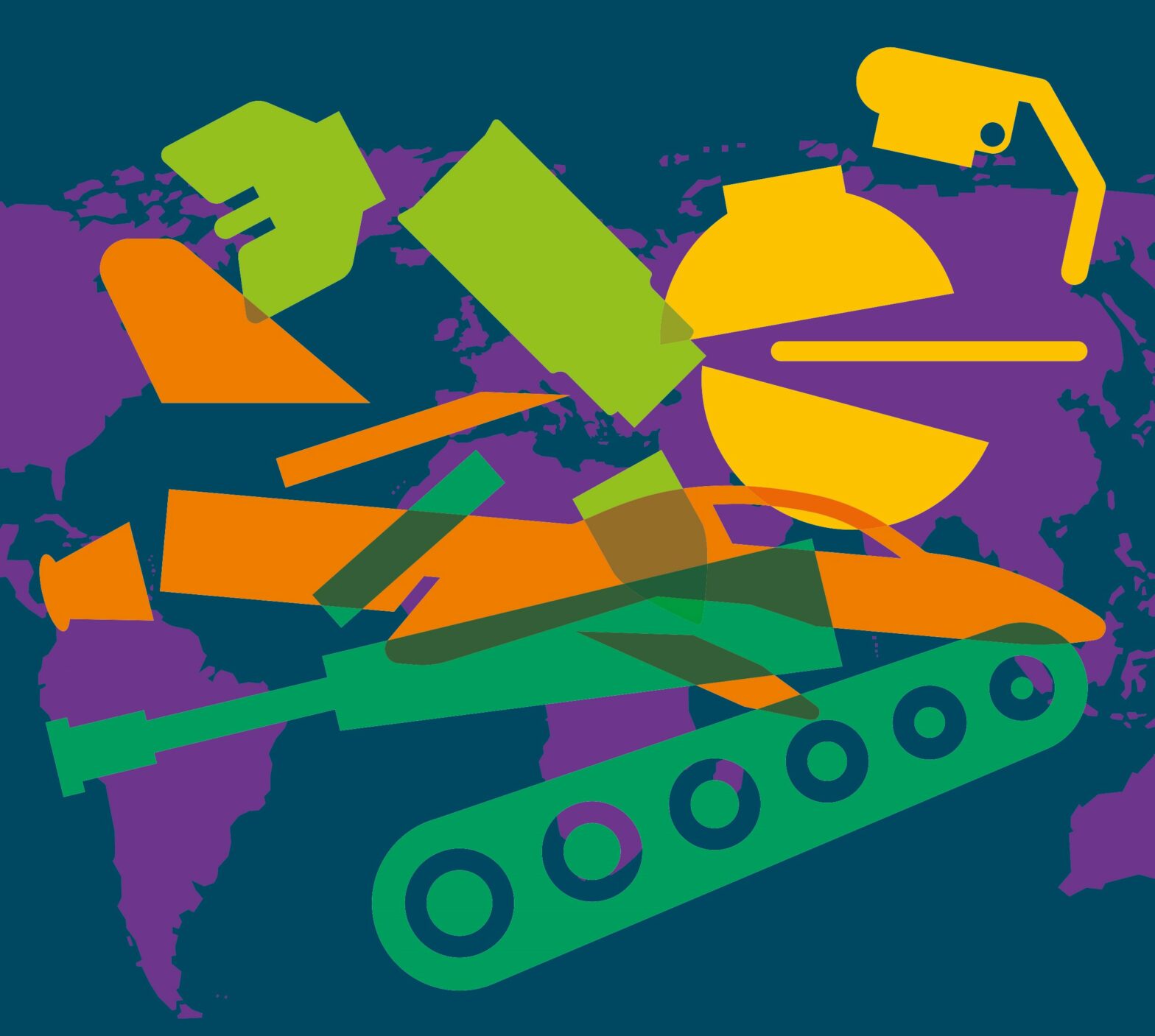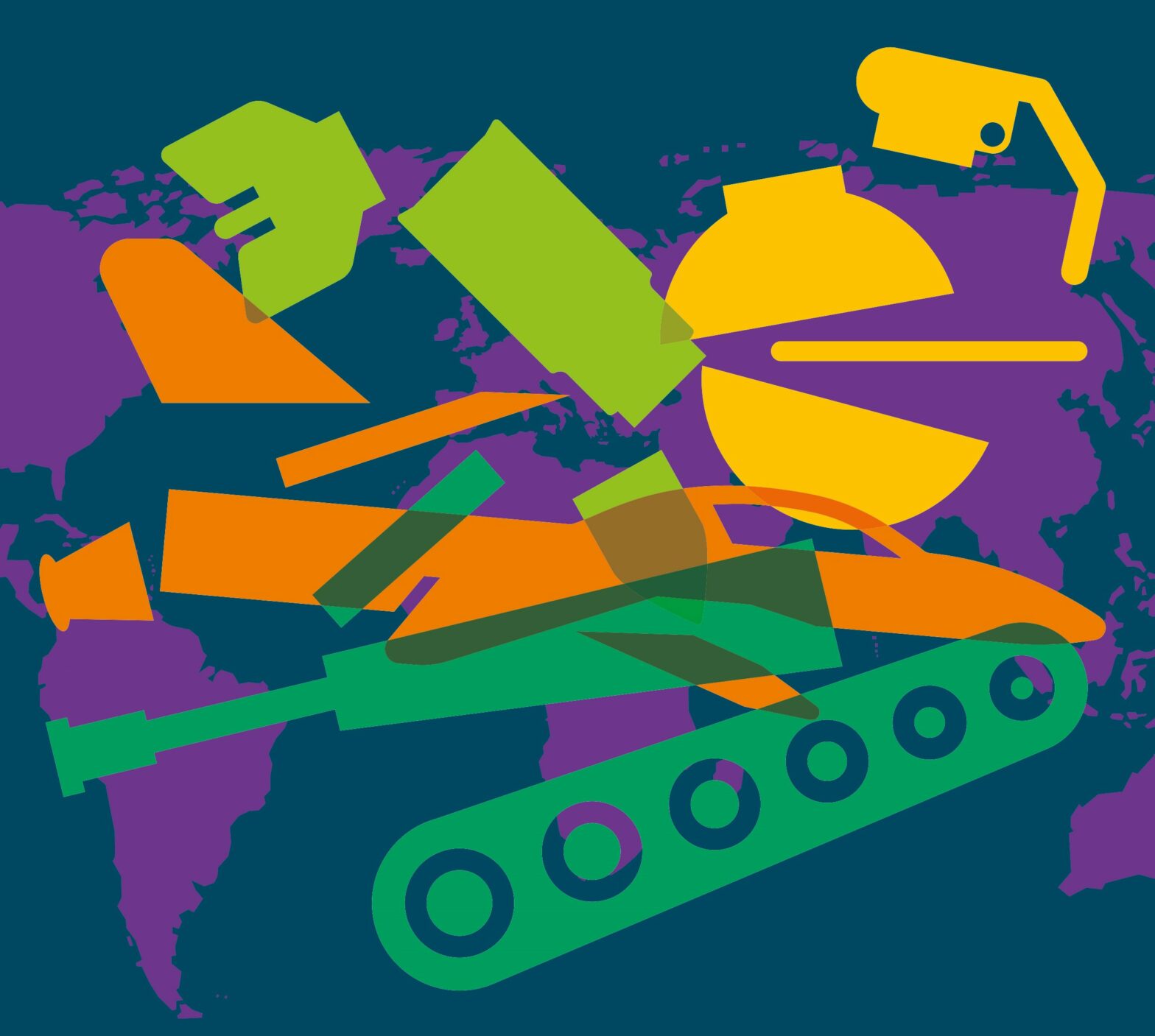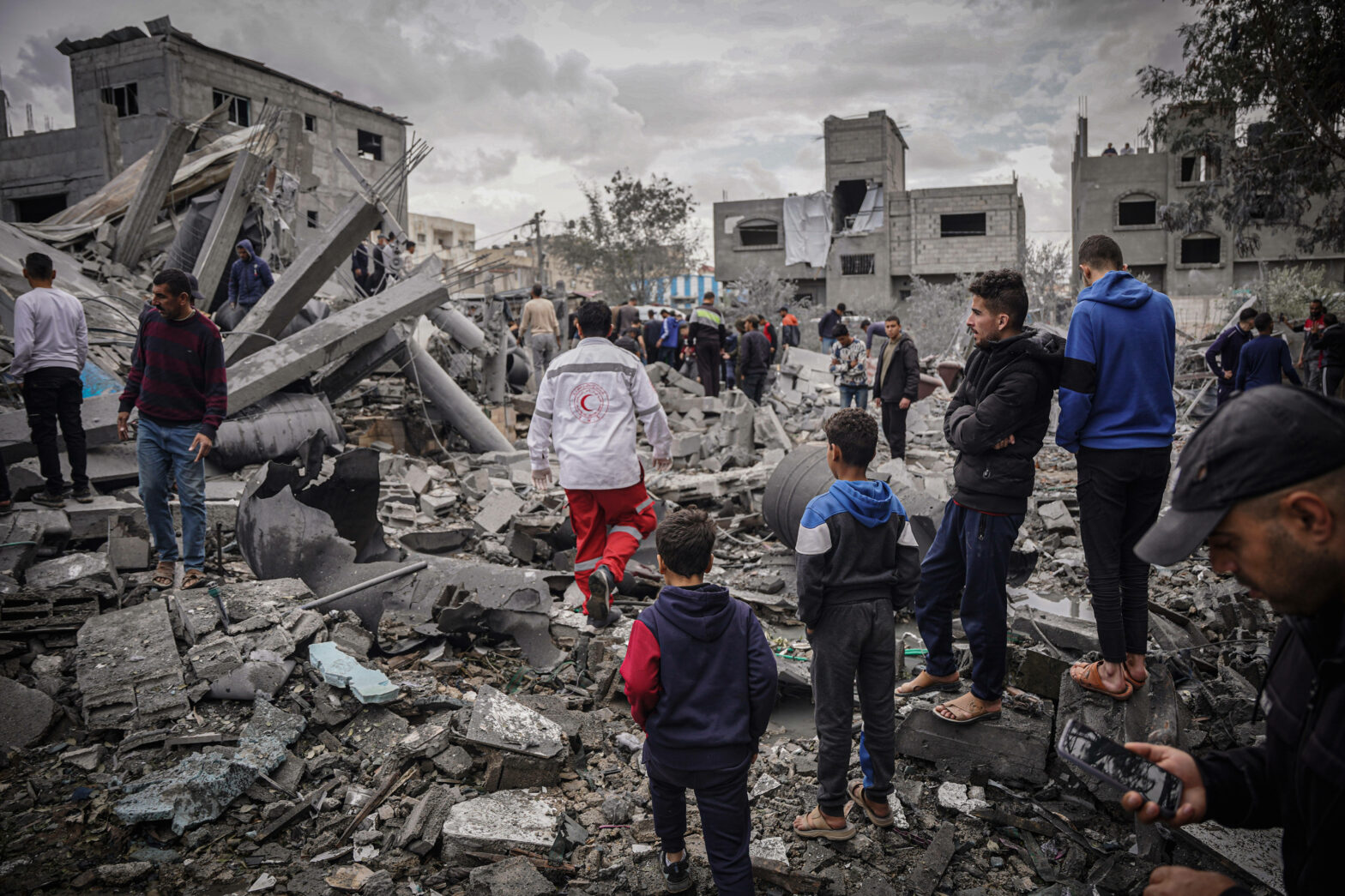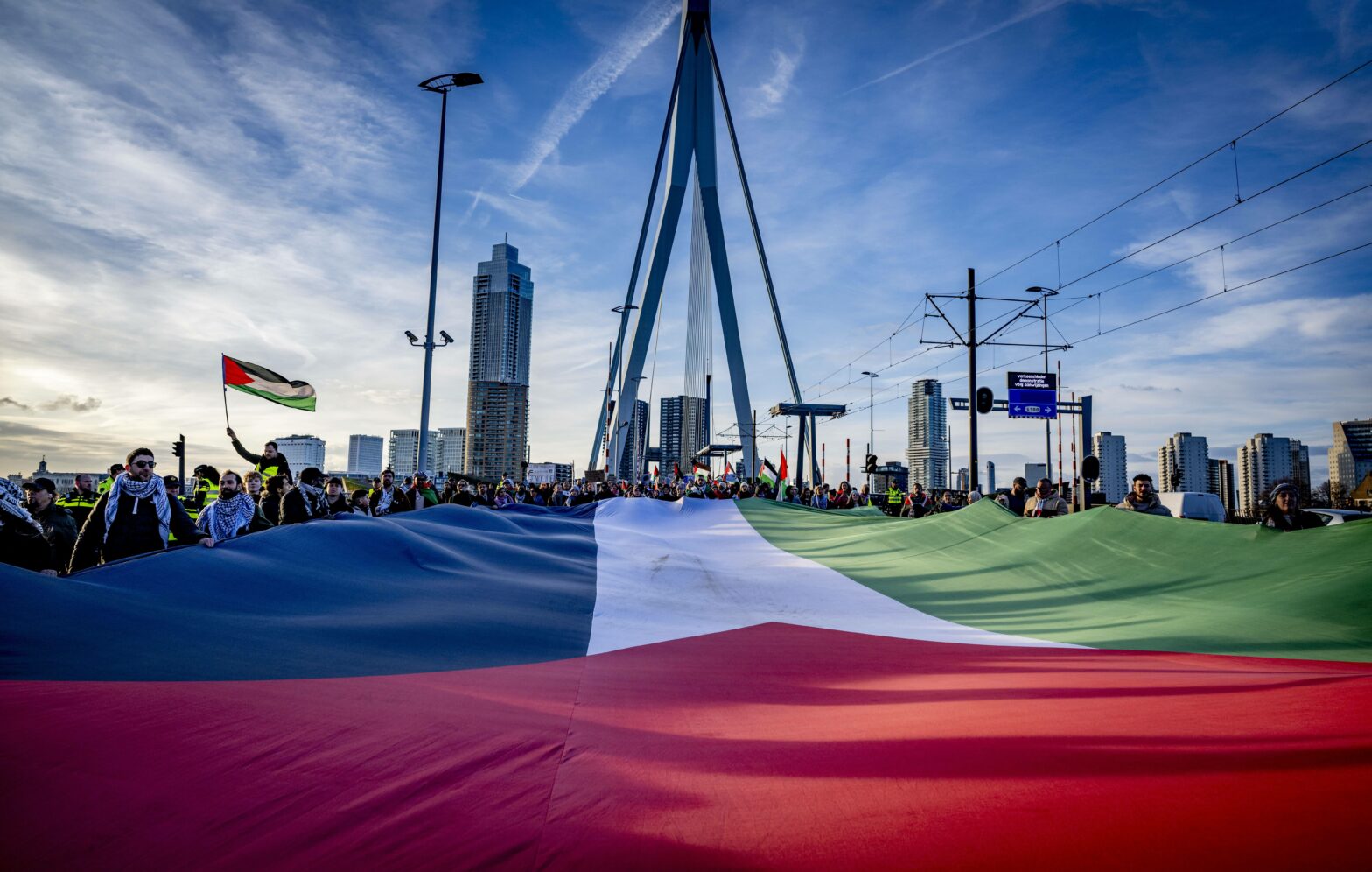Share Twitter Facebook Email Copy URL
Climate change as a security risk
Anthropogenic global warming is a worldwide challenge for the future of humanity. The fifth assessment report by the Intergovernmental Panel on Climate Change (IPCC) of 2013/14 showed that if greenhouse gas emissions continue to rise, a temperature increase of 5 °C is possible by the end of this century, which could be limited to below 2 °C by an ambitious climate protection policy. Consequences affect the entire climate system: atmosphere and oceans are warming, glaciers and ice sheets are melting, sea levels are rising, and extreme weather events are increasing. Affected are the loss of species and ecosystem services, water resources and crop yields, vital networks and infrastructures, negatively affecting the lives of millions of people.
If a critical threshold is exceeded, there is a risk of amplification effects that destabilise the Earth’s climate. Potential tipping elements are the shrinking of glaciers in Greenland and West Antarctica with a rise in sea level of several metres, the weakening of the Gulf Stream, the thawing of permafrost soils or the change in the Asian monsoon. Such phenomena can accelerate climate change and catapult the Earth system into a “hothouse earth” via complex chains of effects.
Climate change threatens human security worldwide, especially for poorer countries and population strata that have few means to protect themselves. Conflict-relevant consequences of climate change are the lack of water and food, storms and floods, and environmentally induced migration. If rising food prices or water shortages exacerbate food problems, this may result in social unrest. Severe storm and flood disasters cost the lives of people or displace them to neighbouring regions. Such amplification effects can lead to the cross-border spread of conflicts. The effects of climate change on the availability and distribution of resources and related resource conflicts are also of importance. These include the degradation of forests and arable land, the depletion of water supplies and fish stocks, or the consequences of mining and dam projects. Most of the time, such conflicts are of local and regional importance without posing a significant threat to international security. The conflict impacts of climate change are often indirect, complex, and linked to political, economic, and social conflict factors whose effects are amplified or mitigated.
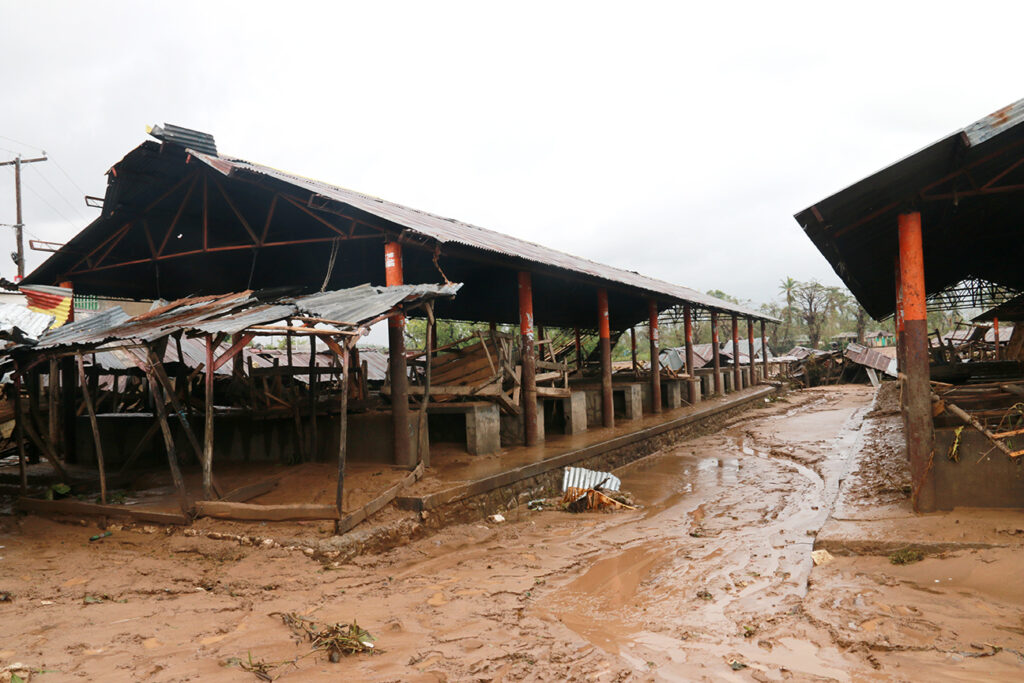
Quantitative studies on climate conflicts
In the specialist literature, there are contradictory statements on the link between climate change and violent conflict. Among numerous quantitative empirical studies on large historical periods, geographical regions, forms of violence and causal mechanisms, most studies found significant links, whilst others found only ambivalent or no strong links. While clear links between climate and conflicts have been observed for historical contexts (such as the “little ice age” between the 15th and 19th centuries), the results for the more recent past are less pronounced. Since the end of World War II, the rise in global mean temperature has not been clearly correlated with the number of armed conflicts. These rose until the end of the Cold War, then fell and have been rising again for about a decade. Recent figures reach new highs of around 50 armed conflicts per year.
The differences escalated when, in an article in the journal Science in 2013, scientists from top universities in the USA attributed social instability and violence in past and present times to variations in temperature and precipitation. The debate reached mass media worldwide, and Der Spiegel spoke of a “scientific feud on climate studies”. In the meantime, there have been efforts to bridge the differences. An expert survey in the journal Nature documented that the risk of conflict would increase significantly with future warming, but that it could also be contained through adaptation measures. Social inequality, weak government and other socio-economic drivers often have a stronger influence on violent conflicts than climate change. Many studies show that violent conflicts are primarily exacerbated by climate change in places where there is a large population increase, low level of development, low economic growth, medium level of democracy, ethno-political differences as well as political instability and violence. For extreme scenarios of “climate wars” and “mass exodus” caused by climate change, a sufficient empirical basis is currently lacking, as the 2020 Peace Report emphasised.
Regional hot spots and conflict constellations
Current research uses geo-referenced data that also include small-scale violent events (e.g., violent protests, riots, acts of terrorism). Complex chains of effects and causal relationships are still poorly understood theoretically, difficult to prove and dependent on regional contexts. The analysis of individual cases can help us to understand the complex interactions and amplifications between climate change, vulnerability, and violent conflict in climate change hot spots, where societal tipping points may also occur. In South Asia, storms and floods combine with food problems and environmental migration. In Latin and Central America, conflicts over land and biodiversity are at the foreground. In the Sahel region of Africa, the scarcity of land and water is affecting the relationship between farmers and nomads, which is already strained by mechanised agriculture, resource exploitation and land investments. Increasingly, small farmers are being dispossessed and nomads are deprived of their traditional migration routes, fuelling land-use conflicts.
Contradictory developments are evident in the water supply in the Middle East. On the Nile, for example, there are differences between Egypt and the upper riparian states due to growing water demands caused by economic and population growth as well as dam projects in the region. In contrast, here and in other regions there are negotiations and agreements on the common use of water that contain conflicts.
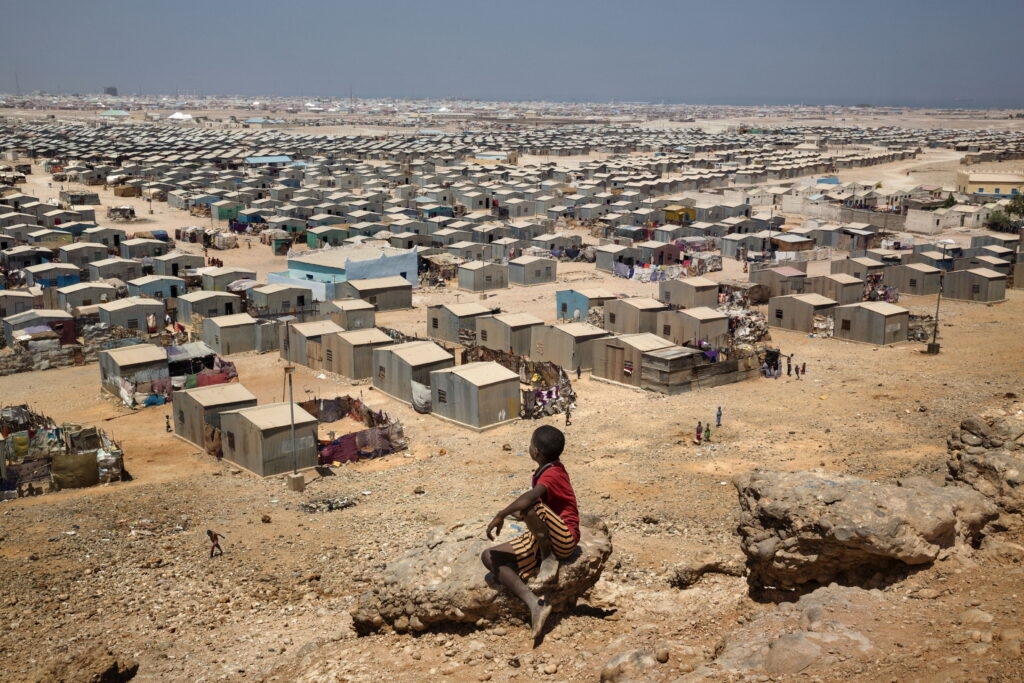
The connection between climate change, migration and conflict is characterised by a complex nexus of problems that include marginalisation and exclusion, disintegration and secession, population pressure, exploitation of land and forests, declining agricultural productivity, food insecurity and diseases. While some publications predicted hundreds of millions of environmental refugees, others pointed out that many affected people are trying to adapt or do not have the opportunity to migrate over long distances. Instead of viewing climate-induced migrants and people in need as a threat against which defensive measures are taken, the aim is to support them with relief measures, strengthen their resilience and prevent causes such as climate change that threaten the natural livelihoods of people. If this cannot be prevented, immigrants must be integrated into the societies of the destination countries. Migration networks can create stable structures between countries of origin and destination that contribute to problem solving, climate adaptation and mutual development.
Explaining everything through climate change allows to shift the responsibility onto a global problem and to neglect other causes of conflict such as neoliberal globalisation or systemic problem solving. Thus, the plausible account that the Arab Spring was connected to weather extremes in other parts of the world distracted from the dissatisfaction in the Arab world or the downsides of globalised food markets. While the Darfur conflict as well as the Syrian conflict were associated with climate change as a driving factor, caused by droughts and desertification, existing conflicts, rivalries, and structures of violence as well as failed government policies were easier to ignore. The instrumentalisation of climate change for one’s own interests also applies to geopolitical conflicts between the great powers over the resources of the Mediterranean or the Arctic region, where exploitation is intensified by the warming, but not primarily caused by it.
Industrialised countries are also affected by climate risks, even if the possibilities for adaptation are higher and the potentials for conflict are lower. Heat waves in 2003 and 2018, forest fires in Australia and the USA in 2019, the Elbe floods in 2002 and 2013 and numerous hurricanes, all had serious consequences. Hurricane Katrina in 2005 on the Gulf Coast of the USA killed 1,800 people, hundreds of thousands fled the region, the authorities lost control, and the police was unable to maintain order.
Sustainable peace instead of defence against threats: from conflict to cooperation
The question is how to respond to the threats of climate change. Reactive action patterns are all about averting threats to national and international security, which can lead to conflicts and instabilities. In 2007, 2011 and 2020, the UN Security Council discussed the security risks of climate change without reaching an agreement. Other security policy actors also addressed possible security risks and destabilisation potentials of climate change, including NATO, the Pentagon, and the German Armed Forces. While these organisations are among the biggest polluters themselves, they are preparing for humanitarian operations, disaster and coastal protection as well as violent conflicts and refugee movements. Despite the rhetoric of “climate wars” in media, meetings or official documents, there have been few concrete measures to address the security risks of climate change.
Violence and forced migration are not necessary responses to climate change. Preventive approaches aim to avoid vulnerabilities and risks to human security and to strengthen the adaptive capacity and resilience of communities particularly affected by climate change impacts. Institutional structures focus on preventive and cooperative solutions, thereby avoiding the conflict risks of climate change and promoting a “climate for peace”. Challenges can prompt people to adapt or to find innovative, sustainable, and cooperative solutions to problems, e.g. more efficient use of resources and increased cooperation in addressing problems. Well-known examples are the 1992 UN Framework Convention on Climate Change, the 1997 Kyoto Protocol, and the 2015 Paris Climate Agreement. Cooperative responses to climate change may play a greater role in the future, for example in environmental cooperation or agreements on the shared use of resources. Here, there is still a need for research to improve the database and theoretical understanding of the interrelationships, which is increasingly being explored in concepts of “sustainable peace” or “environmental peacebuilding”.
Jürgen Scheffran is Professor of Geography at the University of Hamburg and chair of the Research Group Climate Change and Security in the Center for Earth System Research and Sustainability (CEN) and the Climate Excellence Cluster CLICCS. After the study and doctorate in physics, he worked in interdisciplinary research groups in environmental science and peace and conflict research at the universities of Marburg, Darmstadt, Paris and Illinois, as well as the Potsdam Institute for Climate Impact Research (PIK).
